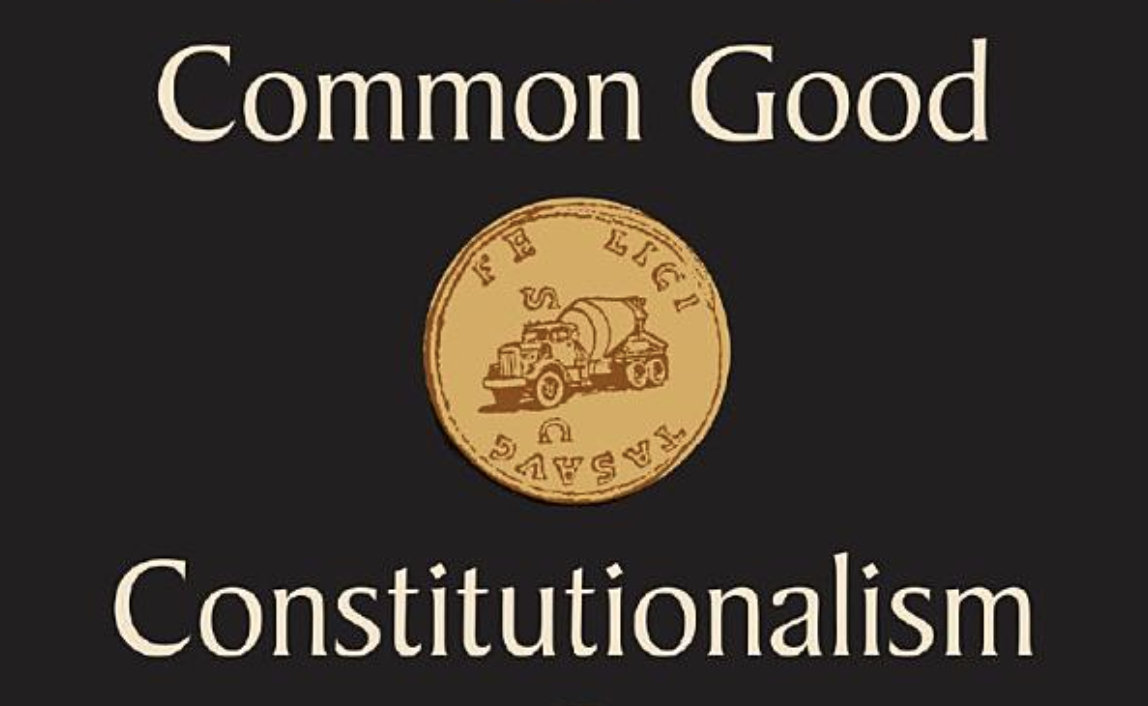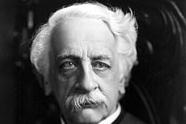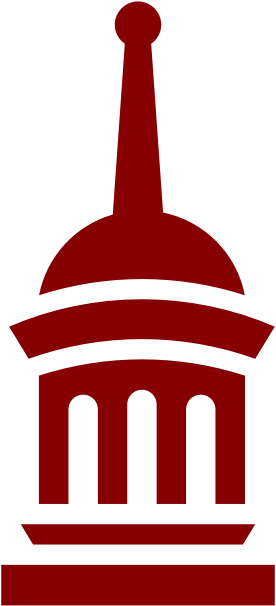
Part I of this review discussed three aspects of the classical legal cosmos that Prof. Adrian Vermeule’s Common Good Constitutionalism presents in a fresh light: the nature of law and relationship between lex and ius, the nature and justificatory structure of personal rights, and the nature of legal interpretation. Those concepts are foundational to the book’s more ambitious arguments about the American constitutional order, although the book’s presentation of them could also stand alone as a valuable and accessible account of the classical legal tradition. But Vermeule wants to do more than just revive an understanding of the classical legal tradition. He wants to show that the classical tradition is our tradition. To do that, the book offers neither a historicist nor a purely theoretical account, but rather a “work of interpretation,” a lawyer’s effort to offer the best interpretive account of the American constitutional order in light of its animating principles and ideals. This turns out to be a rather Herculean task, and even the reader who nods along with the book’s account of the classical legal tradition may have lingering questions about the book’s larger interpretive sketch of the American constitutional order. Regardless, Vermeule has made a bold claim here that is worth exploring further.
As discussed in more detail in Part I of this review, Vermeule casts classical legal interpretation as a coherence-seeking project that aims to harmonize enacted texts and legal doctrines with the larger landscape of ius. The Anglophone world most readily associates that mode of interpretation with Ronald Dworkin, whose account of “fitting and justifying” legal texts and rules in light of legal principles and ideals looms large in American jurisprudence. Vermeule recognizes that readers familiar with Dworkin’s “conventionally left-liberal” substantive commitments might balk at the suggested association between Dworkin and the classical legal tradition. But Vermeule uses Dworkin primarily as a foil for analytically positivist (including originalist) modes of interpretation and insists that Dworkin’s particular moral commitments are “detachable” from his interpretive methodology, which can just as easily accommodate classical legal principles and ideals. That seems right, especially considering that the “fitting and justifying” mode of interpretation is hardly Dworkin’s invention, even if he did coin a good phrase. Aquinas, for example, seemed to espouse something similar when he suggested that posited law could be “led back” to general principles of natural law,[1] and Dworkin himself drew on the earlier Legal Process school, whose “teleological account” of law Vermeule sees as a “holdover” from the classical tradition. In other words, Dworkin tapped a perennial vein, and it seems perfectly defensible to take his useful picture of fitting and justifying enacted text in light of legal ideals as a modern articulation of the classical mode of legal interpretation.
The book builds on that interpretivist approach to law to make its bolder claim that the classical legal tradition is – not just ought to be – our legal tradition. That is, the book attempts a kind of meta fitting-and-justifying project, aiming to show that the classical law “is the best of our tradition,” even if it has been driven underground at the level of rhetoric and in the legal academy. So, for example, the teleological common good framework still pervades our law, from “general welfare” clauses in the federal and state constitutions, to statutes directing the executive to regulate some domain in “the public interest,” to the unwritten concept of the states’ “police power” to legislate for health, safety, and morals. Judges use uncodified substantive canons of interpretation, such as the canon against absurd results and clear-statement rules, to help interpret statutes and harmonize them with general legal principles of justice and rationality. Administrative law embodies principles of “natural procedural justice” that “float free” of the Administrative Procedure Act or any other statute. And so on – in these examples, and others throughout the book, Vermeule shows that the American juridical order contains abundant material that seems rooted in the classical legal tradition.
Of course, Vermeule acknowledges, as he must, that not all the available legal material is a good fit with the classical tradition. Positivist and instrumentalist conceptions of law, and their corresponding originalist and progressive modes of interpretation, have broken with the tradition and undoubtedly influenced our law, usually in an individualist and libertarian direction. But still, the book argues, the break with the tradition is recent, and it has not been clean. Purportedly originalist decisions, for example, are often “all but frankly Dworkinian,” attempting to fit and justify skeletal constitutional text with broad, abstract, and highly contestable principles of moral and political philosophy. And progressive decisions (whether or not cloaked in the jargon of originalism) work with a “particular and contestable vision” of human flourishing, even if a “wildly implausible” one. Both are telltale signs that the classical framework is still operating in the background, if in warped form.
Even so, the book’s meta-interpretive claim about the American constitutional order may be a hard sell in some quarters. At a practical level, it must contend with powerful rhetorical, political, and institutional counterforces. Originalism has been highly successful at claiming the mantle of the true American legal tradition for itself, perhaps in part because it plays into latent conceits about American constitutional and legal exceptionalism, in part because it rides the strong wake of Holmesian skepticism about natural law. Judges across the political spectrum are now expected to rationalize their decisions in the lexicon of originalism, even in hard cases, where reference to political morality and contested conceptions of the good is unavoidable.[2] And academics across the political spectrum are happy to build their theories on the scaffolding of originalism, exploiting the fact that (as Vermeule puts it) “originalism lacks the resources, from within its own premises, to specify the level of generality at which meaning is determined.” Of course, the rhetorical and political context could change, and there are signs it is starting to, as originalism’s original targets—the Warren and Burger Courts—recede from view, and a newer crop of judges, lawyers, and law students questions whether originalism (understood as positivism and historicism) can deliver on its promise to reach determinate outcomes without reference to legal or political morality (and whether that is even desirable).[3] That said, the American self-conception as a kind of legal Galápagos runs deep, and it’s not hard to imagine some stiff resistance to the book’s contention that our constitutional system is embedded in, and should be harmonized with, a larger fundamental matrix that includes natural law and the law of nations.
At a more theoretical level, the book’s interpretive account of the American constitutional order leaves some questions open, at least in my mind, about the extent to which positivist originalism and instrumentalist progressivism can claim to be natural outgrowths of principles that are as deeply embedded as classical principles in American law. Those questions tie into larger debates in political philosophy about how to understand the relationship between the classical tradition and American political order.[4] Sketching very broadly, at least two different major strands of thought animate American law and political order. Vermeule refers to these as the “older natural law strand” that emphasized the “social nature of man,” and the “newer, Enlightenment-influenced strand” that “tended to emphasize natural rights and saw human nature as intrinsically individualistic rather than social and political.” While acknowledging the theoretical distinction between the two strands, the book presents them as “internal debates held within a common framework” of the classical tradition, and it stresses that they operated similarly at the level of constitutional law, both leaving “broad scope for public authorities to make reasonable determinations” for the public good.
That is one possible interpretive account, but perhaps not the only one. The differences between the two strands run sufficiently deep that the newer, proto-liberal strand may represent a real break with the classical tradition, even if the break took time to fully work itself out, including at the operational level of constitutional law. After all, the two strands do seem to offer inverted understandings of the same set of basic concepts. Fundamentally, the classical understanding of the relationship among law, rights, public authority, and the common good stems from the premise that it is good, natural, and necessary for humans to live in political community. In that conception, as Vermeule puts it, “human flourishing, including the flourishing of individuals, is itself essentially, not merely contingently, dependent on the flourishing of the political communities” in which “humans are always born, found, and embedded.”[5]
Hence the overall orientation of law to the common good, the dependence of subjective personal rights on objective right, and the understanding of law as reasoned and didactic, is not merely a willed constraint. The proto-liberal strand, on the other hand, conceives of rights “primarily in terms of subjective power,” not objective right, and “sees the end of politics as being liberty” (understood as freedom of the will from constraint) “rather than the common good of human life.”[6] On those premises, at least when they are logically worked out, law is essentially a restriction on freedom of will rather than an ordinance of reason for the common good, and it is tolerated only because and insofar as it secures the greatest possible scope for individual autonomous choice. That account of law inverts the classical and common-good account, but it is the account that underpins a good deal of modern American jurisprudence, from separation of powers doctrine to individual rights determinations. Is that account really “impossible to square” with the larger arc of American law, as the book argues?
It probably depends on one’s temporal standpoint, and that is one of the limitations of an interpretive approach to building legal theories. A good interpretive account today may be a bad one tomorrow. While it may be correct, as the book argues, that the broad sweep of American law across time reflects classical more than proto-liberal principles, that may simply evince the fact that the break with the classical tradition took time to become fully manifest, even as the seeds were planted much earlier. If we were to take a snapshot of American law a century or two from now, the whole might well skew against the classical tradition. Then again, if the classical tradition holds the correct understanding of law, perhaps it cannot really be suppressed in the long run, only driven underground temporarily. In any event, those questions are somewhat beyond the scope of the book’s project, and none of them negates the book’s claim that the classical tradition is the best of our tradition. But they do perhaps help explain why the claim is tricky to prove. And they may also help explain why the classical legal tradition currently has trouble operating as a strong organizing principle in the American context.
Even with that wrinkle, Common Good Constitutionalism makes a sorely needed contribution to American legal discourse. For law students just starting out, the book offers a broader and deeper picture of the jurisprudential landscape than is typically on offer, widening the lens to show that “progressive rights-talk” and “establishment originalism” do not exhaust the available options. For judges, the book offers a justificatory account of presumptive textualism that avoids the trap of positivism, and also provides a framework for approaching hard cases when text runs out – something originalism has never quite managed to offer, at least without abandoning its own jurisprudential premises. For lawyers and readers at large, the book reintroduces forgotten concepts and makes a compelling case for a general reorientation of American constitutional law to a classical conception of the common good. If nothing else, the book should stir up the legal academy and spice up the conversation. And if the initial responses are any indication, it is already doing just that.
[1] See, e.g., James Bernard Murphy, Law’s Positivity in the Natural Law Jurisprudence of Thomas Aquinas, in The Philosophy of Positive Law: Foundations of Jurisprudence 113-16 (2005).
[2] To be clear, this is not a claim about good or bad faith; judges who profess originalism may believe in good faith that originalist methodology really yields determinate answers, even in hard cases, without reference to political morality or contested conceptions of the good. Instead, the claim is that reference to political morality and contested conceptions of the good is unavoidable, especially in hard cases, and occurs in originalist decisionmaking, whether or not the judge is conscious of it.
[3] E.g., Josh Hammer, Common Good Originalism, https://americanmind.org/features/waiting-for-charlemagne/common-good-originalism/ (May 6, 2020); Hadley Arkes et al., A Better Originalism, https://americanmind.org/features/a-new-conservatism-must-emerge/a-better-originalism/ (March 18, 2021); cf. Adrian Vermeule, On “Common-Good Originalism”, https://mirrorofjustice.blogs.com/mirrorofjustice/2020/05/common-good-originalism.html (May 9, 2020).
[4] See, e.g., Michael Hanby, The Birth of the Liberal Order and the Death of God, New Polity (Feb. 2021), available at https://newpolity.com/blog/the-birth-of-liberal-order.
[5] Cf. Aristotle, Politics, 1252a-1253a; James Wilson, Lectures on Law, Chapter VII: Of Man, as a Member of Society.
[6] Edmund Waldstein, O.Cist., Hard Liberalism, Soft Liberalism, and the American Founding, https://thejosias.com/2018/04/11/hard-liberalism-soft-liberalism-and-the-american-founding/ (Apr. 11, 2018).






